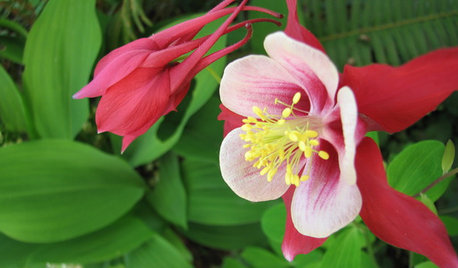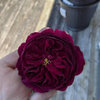most blackspot resistant hybrid tea?
sabalmatt_tejas
14 years ago
Related Stories

FALL GARDENING9 Deer-Resistant Flowering Shrubs to Plant This Fall
These exquisite shrubs will attract your attention but won’t tempt the deer that roam your neighborhood at night
Full Story
GARDENING GUIDESGreat Design Plant: Rosa Banksiae a Low-Maintenance Beauty
This thornless, disease- and insect-resistant rose brings showers of white or yellow flowers to the spring garden
Full Story
GARDENING GUIDES6 New Plant Varieties That Beat Out Their Parents
With better resistance and fewer demands, these garden beauties are worth a spot on your wish list
Full Story
EDIBLE GARDENSSummer Crops: How to Grow Tomatoes
Plant tomato seedlings in spring for one of the best tastes of summer, fresh from your backyard
Full Story
GARDENING GUIDESWhat Kind of Roses Should You Grow?
Want to add the beauty of roses to your garden? Find out which ones, from old-fashioned to modern, are right for you
Full Story
GARDENING GUIDES8 Plants for a Deliciously Fragrant Fall Garden
Scent the autumn air with the perfume of caramel corn, honey and spices by adding these intoxicating plants to your landscape
Full Story
MAN SPACESWhy Men Really Do Need a Cave
Don't dismiss cars, bars and the kegerator — a man space of some kind is important for emotional well-being at home
Full Story
GARDENING FOR BIRDSWild Birds Transform a Woman’s Garden and Life
How Sharon Sorenson created a wildlife haven and became the Bird Lady of Southern Indiana
Full Story
GARDENING AND LANDSCAPINGCitrus 101: Start Your Own Backyard Orchard
This Earth Day Weekend, Add Some Green, Style and Deliciousness to Your Landscape
Full Story
GARDENING FOR BUTTERFLIESGreat Design Plant: Columbine Grows Happily in Shade and Sun
Its ethereal beauty comes from complex forms and wide-ranging colors, but columbine’s benefits are highly attractive too
Full Story








Maryl (Okla. Zone 7a)
olga_6b
Related Professionals
New Bedford Landscape Architects & Landscape Designers · Wheeling Landscape Architects & Landscape Designers · Maple Valley Landscape Contractors · Alpharetta Landscape Contractors · Clark Landscape Contractors · Fort Worth Landscape Contractors · Fruit Heights Landscape Contractors · Oakland Landscape Contractors · Rockville Landscape Contractors · Setauket-East Setauket Landscape Contractors · Severna Park Landscape Contractors · South Hackensack Landscape Contractors · Weslaco Landscape Contractors · White Bear Lake Landscape Contractors · Whittier Landscape Contractorssammy zone 7 Tulsa
sabalmatt_tejasOriginal Author
michaelg
gnabonnand
Maryl (Okla. Zone 7a)
justapeeker
jont1
michaelg
Maryl (Okla. Zone 7a)
michaelg
Maryl (Okla. Zone 7a)
irish_rose_grower
leelf1
littlesmokie
mike_in_new_orleans
geo_7a
harryshoe zone6 eastern Pennsylvania
dennisb1
littlesmokie
teresa_b
grandpa8
michaelg
jont1
lesmc
petaloid
Maryl (Okla. Zone 7a)
gardenfanatic2003
jont1
garden4510
rosehog
zack_lau z6 CT ARS Consulting Rosarian
ceterum
kstrong
michaelg
the_morden_man
ceterum
Alice
Alice
JohnnieG78
the_morden_man